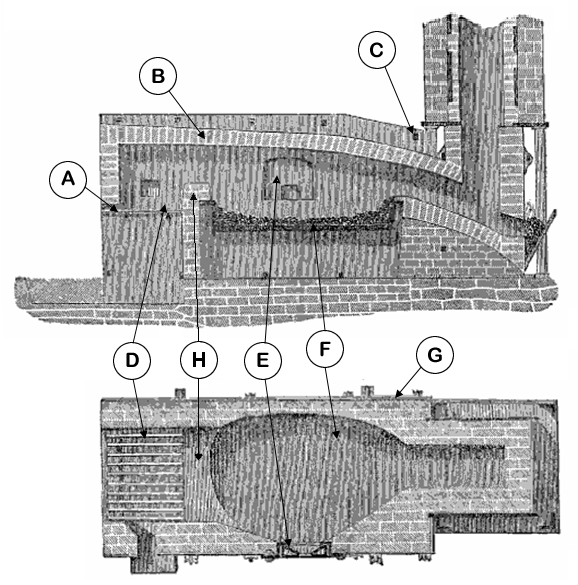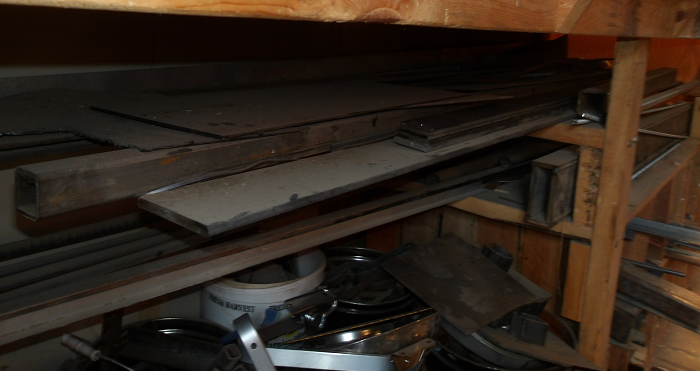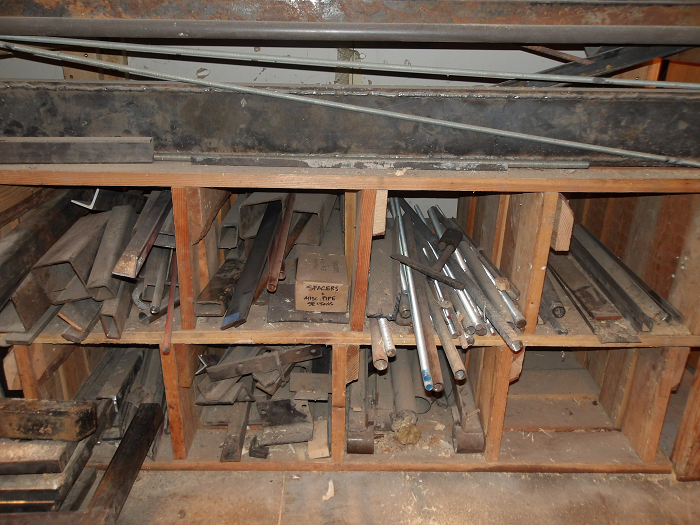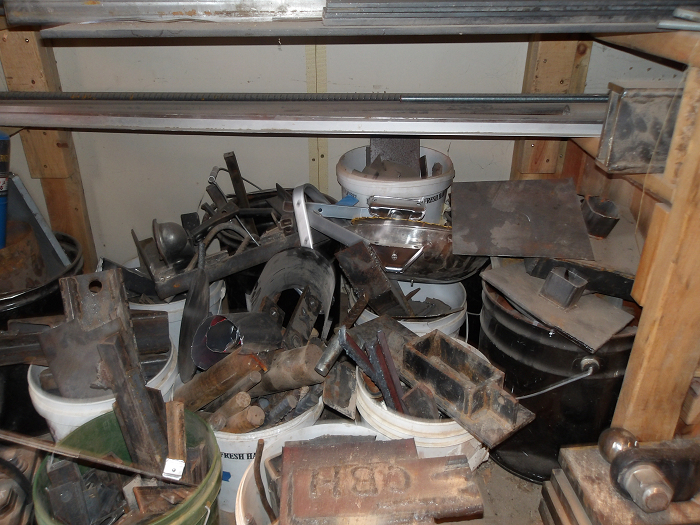
 15
15




Join Justin and a bunch of other talented instructors at this year's PTJ: https://permies.com/s/build-a-smithy
 3
3




Explore the Permies Digital Market - ebooks, movies, building plans, courses, and more. Oh my!


 4
4




Become extra-civilized!
 2
2




Justin Popa wrote:Built in retort after the forge area for making charcoal, wood gas to be sent back down to the feed tube.
 2
2




William Bronson wrote:
Justin Popa wrote:Built in retort after the forge area for making charcoal, wood gas to be sent back down to the feed tube.
This seems very useful.
Drying out fuel is a natural use of otherwise wasted energy.
Pyrolysis is a further step.
That said, I wonder if a rocket could be used to create draft for a charcoal forge, either by heating combustion air indirectly or an under tuned rocket exhasting unburnt gases into the coal bed.
Nails are sold by the pound, that makes sense.
Soluna Garden Farm -- Flower CSA -- plants, and cut flowers at our farm.
 3
3




 5
5





 2
2




Garden Master Program video course and ebook guide
 3
3




 2
2




Justin Popa wrote:can anyone tell me about the current metal working space at the Labs?
part of this project will be building a simple forge and experimenting with a rocket forge design. along with that there are a lot of blacksmith tools that we can make once we have a working forge:
tongs for holding the hot metal
chisels for cutting
punches for making holes
drifts for sizing and shaping holes
bending forks and wrenches for bending and twisting
rakes and washers for tending the fire
id love to guide people thru making any and all of these tools. it would be a great way to learn basic hammer work, heat treating, material selection, and finishing.
however there are a few things that would be really nice to have on hand at the start:
a designated covered work area.
an anvil or other large block of steel
a (heavy) bench with a (heavy) vice
electrical access would be cool but not required
to make any of this happen we need materials. no matter what gets built we will need:
earth/ cob
firebrick
rockwool
satanite or other refractory lining
lumber
scrap metal (bar stock, old tools, sheet metal, barrels, buckets, ect.)
 3
3




 1
1




 2
2




Beau M. Davidson wrote:I don't have a concrete idea of what kind of temp boost we'd get, but I have to think it would be a serious bump.
"We carry a new world here, in our hearts..." --Buenaventura Durruti
"Don't wish it were easier. Instead, wish you were better." --Jim Rohn




Justin Popa wrote:
and as a final thing to think about i present to you the Trompe! an amazing way to turn falling water into compressed air. not a rocket at all but a really cool way to push air without electricity or a ton of labor pumping a bellows. is there any falling water at Wheaton Labs we can play with?
https://en.wikipedia.org/wiki/Trompe
 4
4




Become extra-civilized!
 3
3




 2
2




Justin Popa wrote:thanks for the feedback everyone!
Beau: a tent is fine as a building and experimenting space. whats most important is some deep shade so that the color of the hot iron can be read easily and ventilation so people arent sucking in smoke. ive done my fair share of shade tree blacksmithing and its nice to be out in the breeze. on the other hand its much more efficient to have a bench and anvil and forge all mounted firmly to level ground inside a proper shop. working inside would mean needing to install some kind of flue for the forge or furnace. even rockets produce gases we dont want in enclosed spaces. i think the easiest would be a covered outside space to build and play and experiment, and we can work on creating a permanent inside shop space as time and interest allow.
as for material volumes. "normal" forges and furnaces are pretty small and simple so the building materials will be used mostly for the rocket parts of the system. enough junk to cobble together 1 or 2 rocket engines should be plenty to play with
a final note on air supply. its already been decided that the rocket forge and rocket furnace experiments will not include any forced air (shop vac, ect). i agree. if youre gunna push the air manually, it isnt really a rocket anymore. however! for the initial build of the "normal" forge, some kind of air supply is needed. old hairdryers work great and are easy to thrift. shop vacs work ok but are loud and tend to push too much air unless you run them thru a rheostat to adjust the amperage. and of course we can build some kind of manually operated bellows if people wanna go oldschool. there are tons of well tested designs for hand pump bellows and i can see them being useful around the labs for future experiments too. any thoughts on this?
 3
3




Justin Popa wrote:a final note on air supply. [...] there are tons of well tested designs for hand pump bellows and i can see them being useful around the labs for future experiments too. any thoughts on this?

"We carry a new world here, in our hearts..." --Buenaventura Durruti
"Don't wish it were easier. Instead, wish you were better." --Jim Rohn
 1
1








"We carry a new world here, in our hearts..." --Buenaventura Durruti
"Don't wish it were easier. Instead, wish you were better." --Jim Rohn
 3
3




 1
1





 1
1










Look here for infoJustin Popa wrote:can anyone tell me about the current metal working space at the Labs?
part of this project will be building a simple forge and experimenting with a rocket forge design. along with that there are a lot of blacksmith tools that we can make once we have a working forge:
tongs for holding the hot metal
chisels for cutting
punches for making holes
drifts for sizing and shaping holes
bending forks and wrenches for bending and twisting
rakes and washers for tending the fire
id love to guide people thru making any and all of these tools. it would be a great way to learn basic hammer work, heat treating, material selection, and finishing.
Preferably gravel floor.however there are a few things that would be really nice to have on hand at the start:
a designated covered work area.
Preferably carbon steel, not harbor frieght's anvil-shaped hunk of mild steel.an anvil or other large block of steel
Metal surface, maybe fabricating table.a (heavy) bench with a (heavy) vice
What for?electrical access would be cool but not required.
Education is a state controlled factory for echoes. -Norman Douglas | History is a vast early warning system. -Norman Cousins
There is thinking about how to do something, and there is doing it. Eighty percent of the time one or the other is overlooked.
 1
1




Garden Master Program video course and ebook guide

|
There will be plenty of time to discuss your objections when and if you return. The cargo is this tiny ad:
Rocket Mass Heater Resources Wiki
https://permies.com/w/rmh-resources
|




